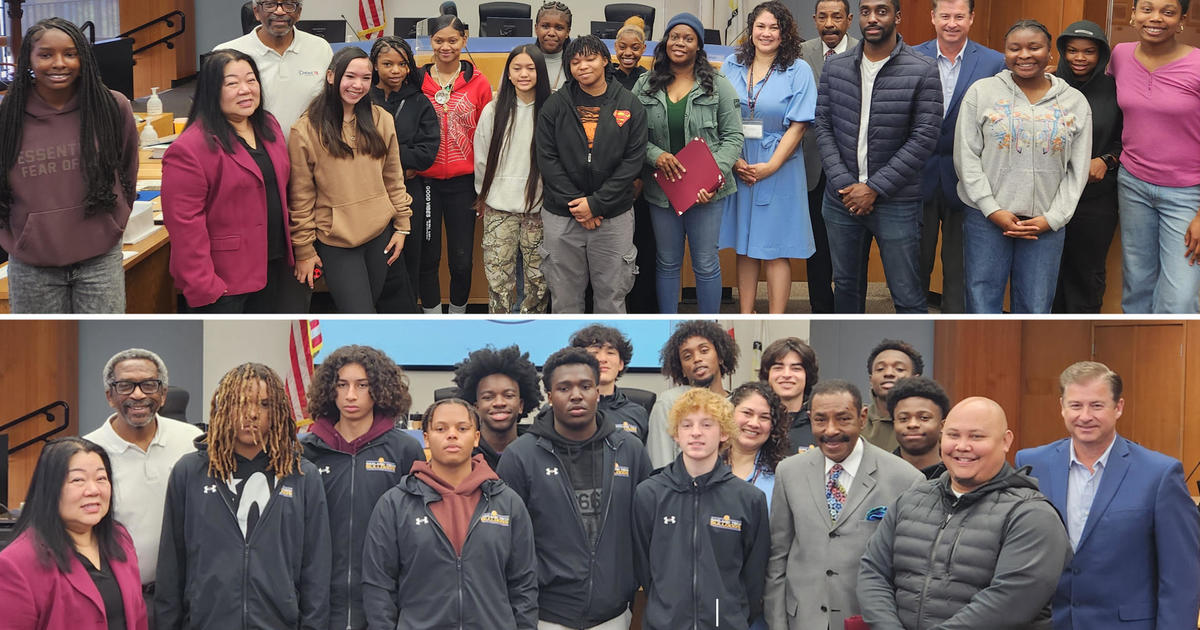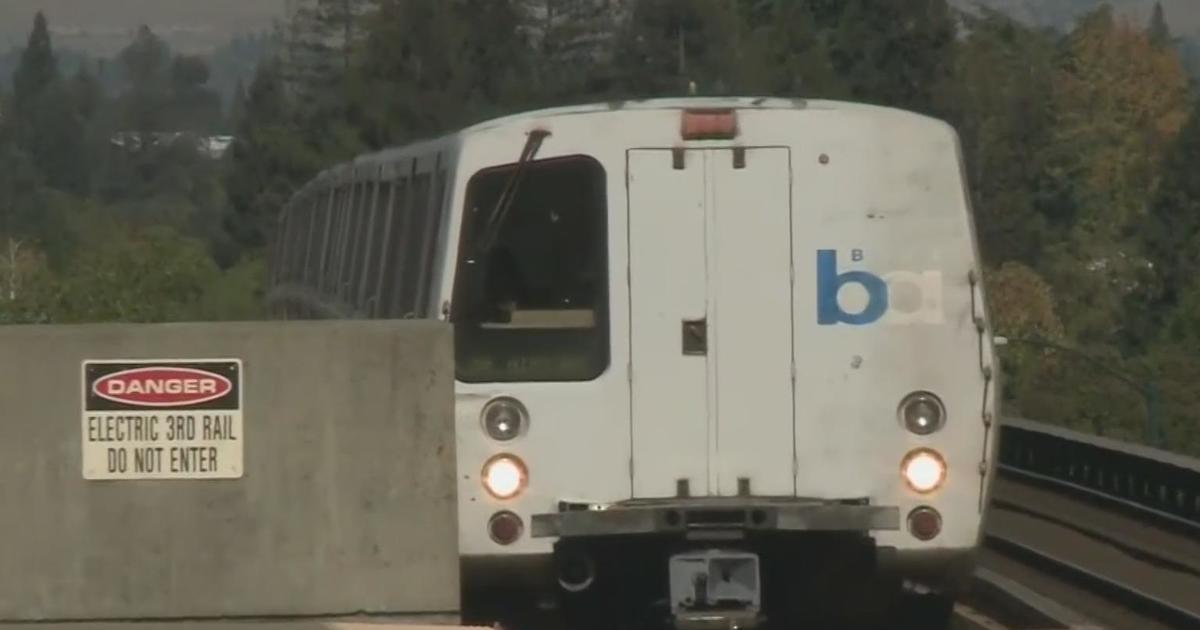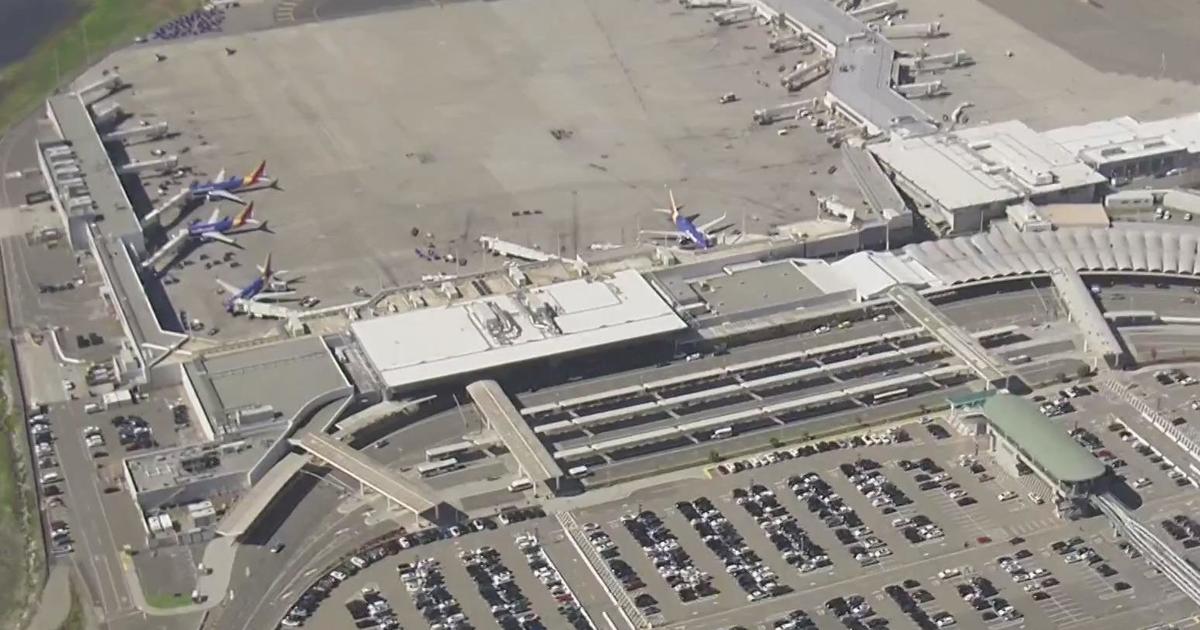COVID: Newsom Hammers Out Back To School Deal With State Lawmakers
SACRAMENTO (CBS SF/AP) — As high school students in Marin County return to classrooms on Monday, Gov. Gavin Newsom has hammered out a deal with state lawmakers to get most public school children statewide back in classrooms by the end of March.
Marin County, which moved into the Red Tier last week, has become among the fastest moving school systems in the state in getting students back into the classroom.
According to the Marin County Department of Education, some schools have been open for in-person instruction for 106 days so far. That's equivalent to more than 1.1 million "student days".
Some high school students returned to the classroom on Monday. By the second week of March, all 17 high schools in the Tamalpais Union, San Rafael, Novato, and Shoreline districts will reopen for some in-person learning.
There have been zero suspected cases of in-school transmission from student to adult, while there are two from adult to student suspected cases.
Newsom wants other districts across the state to follow the lead of Marin and the Long Beach schools.
Monday's deal is a major step in that direction. Under the deal, school districts could receive up to $6.6 billion if they reopen classrooms by March 31.
To get the money, schools must return to in-person instruction at least through second grade.
However, districts in counties with coronavirus case numbers at a specific lower classified level must return to in-person instruction for all elementary school grades, plus one grade each in middle and high school.
The proposal does not require staff and students to be vaccinated, and districts are not required to have agreements with teachers' unions.
Newsom spoke late Monday morning from Elk Grove with a number of other state and local officials and praised Elk Grove schools for moving ahead with reopening.
Newsom noted that as of Monday, the state had administered 9.1 million vaccinations and has lowered the COVID-19 positivity rate to 2.3%, though he also said that California was seeing a plateauing of cases.
Newsom said that the deal to reopen schools was a cause for celebration for everyone, particularly single working moms who have been struggling to balance their jobs with at-home school instruction.
"Single mothers that are celebrating, I imagine, this day compared to many other previous days," said Newsom. "So many of our kids and caregivers are celebrating this day, because we are all united in coming back safely into the schools and helping with the social, emotional supports that our kids so desperately need."
The governor noted that $2 billion of the $6.6 in funding available available would be provided through grants to help with in-person instruction, including funding for PPE, ventilation and other costs associated with returning students to classrooms safely.
The other $4.6 billion will go to what Newsom described as "reimagining the school year," including a look at learning that has been lost over the last year and possibly extending the school year into the summer.
"We incentivize opening up our schools by providing real resources to do it," Newsom said. "We expect that all of our TK to 2 classrooms open within the next month. We want to see more happen beyond that. For unified [school districts] going into Red Tiers, it's TK to 6."
Newsom went on to say that seven additional counties would likely be moving into the Red Tier, though he was not specific about which counties.
"We'll see what happens tomorrow," said Newsom. "We do anticipate a majority of Californians in the next few weeks to be residing in counties that have moved out of the most-restrictive Purple Tier."
The officials said testing is required for schools in the purple tier. But school districts that have already reopened or have plans to reopen in March would be exempt from testing requirements.
Newsom emphasized that the school reopening process is independent of tier status.
"The good news is, as it relates to this school deal, we're not waiting to get out of this Purple Tier in order to get our kids safely back into in-person instruction. That's what's so meaningful to me; we're not slowing down. We're accelerating the pace," said Newsom.
The bill is a deal between Newsom, state Senate President Pro Tempore Toni Atkins and Assembly Speaker Anthony Rendon, all Democrats. It was confirmed by Atkins' office.
The details of the plan are complicated and were confirmed by two state officials with knowledge of the plan who spoke on condition of anonymity because they were not authorized to speak about it publicly.
When asked about whether he might get to a point to mandate reopenings in the fall if state officials had difficulty reaching an agreement with teachers' unions on the deal, Newsom remained steadfast.
"We want schools to safely reopen, period, full stop. I've been saying this for months, said this since we've announced the original framework in December, been saying that even prior to that. So we want schools to safely reopen, we believe they can safely reopen, we believe the data and the science bear that out," Newsom said. "We have all the expectation that schools will be safely reopened across the spectrum come this fall. And we certainly look forward to tremendous momentum, over the course of not just in the next month or two, but notably in the next few weeks."
California counties are divided up into different coronavirus infection level tiers, with each tier having specific rules about how businesses and other public spaces can operate during the pandemic.
To be eligible for this new money, districts in the most restrictive tier -- known as the purple tier -- must return to in-person instruction at least through second grade, the officials said.
Districts in the next highest tier, the Red Tier, must return to in-person instruction for all elementary school grades, plus at least one grade in middle and high school, the officials said.
The money will be distributed through the normal funding method that provides local districts with state money, the officials said, which would ensure more money for schools that serve primarily low-income students. In addition, the officials said districts would get an additional $1,000 for every homeless student they have.
To get the money, districts must meet the requirements by March 31, the officials said. Beginning April 1, for every instructional day school districts do not meet the requirements, the amount of money they are eligible to receive will go down by 1%, the officials said.
Teachers say the framework represents some progress, but needs vaccine provisions.
"The plan has some good things in it, in terms of providing funding that is needed all of the time. So that's great. It would be awesome if the governor, along with local leaders would take their passion and energy in providing access to vaccinations," said Chaz Garcia, the 2nd vice president of the Oakland Educators Association.
The head of the San Francisco Unified School District said that the new deal arrived at by legislators would not impact public schools in his district.
"We are grateful for the recognition that our public schools need more resources to serve our students during the pandemic. Though I wish it could, the governor's announcement does not change our timeline because there are still many steps we need to take to get there and many of those aren't able to be expedited, even with financial incentives," read a statement from SFUSD superintendent Dr. Vincent Matthews. "Make no mistake, we share the urgency to offer in-person instruction to as many students as soon as possible and more resources will help. We are getting closer each day."
Andria Borba contributed to this story.



